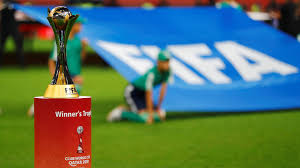The 2025 FIFA Club World Cup marks a historic transformation in the tournament’s structure, format, and global relevance. Scheduled to be held in the United States from June 15 to July 13, 2025, the revamped edition will feature 32 teams for the first time, symbolizing FIFA’s ambitious vision of elevating club football to a truly global spectacle on par with the FIFA World Cup. This expansion has wide-reaching implications for football governance, commercial dynamics, and competitive balance across continents.
From 7 to 32 Teams: A Structural Overhaul
Since its inception in 2000, the FIFA Club World Cup had traditionally featured a limited lineup of seven clubs—primarily the champions of each continental confederation. While this format ensured representation from every region, it often lacked competitive parity and failed to captivate a global audience beyond a few high-profile matches, typically involving the UEFA and CONMEBOL champions.
With the 2025 expansion, FIFA is introducing a World Cup-style tournament with eight groups of four teams each, followed by knockout rounds. This 32-team format mirrors the men’s national World Cup setup and is designed to foster broader inclusion, more competitive fixtures, and increased broadcasting opportunities. It also offers clubs outside Europe and South America a larger stage to showcase their talent.
Qualification Criteria: Continental Representation
To ensure fairness and diversity, FIFA has allocated slots to each of its six confederations as follows:
- UEFA (Europe): 12 teams
- CONMEBOL (South America): 6 teams
- CAF (Africa): 4 teams
- AFC (Asia): 4 teams
- CONCACAF (North and Central America): 4 teams
- OFC (Oceania): 1 team
- Host nation (USA): 1 slot
The clubs are selected based on their performances in continental competitions over a four-year cycle (2021–2024), including past champions of the UEFA Champions League, Copa Libertadores, and other elite tournaments. This model blends sporting merit with geographical balance, allowing top-performing clubs like Chelsea, Real Madrid, Palmeiras, and Al Ahly to qualify alongside emerging forces from less-represented regions.
Commercial and Strategic Impact
From a business standpoint, the expanded Club World Cup is a goldmine. FIFA estimates a potential windfall of over $1 billion in broadcasting and sponsorship revenue, with major brands expected to align their global marketing strategies with the tournament. The decision to host the event in the United States—one year before the 2026 men’s World Cup—also reflects FIFA’s intent to solidify football’s footprint in a commercially vital and rapidly growing market.
For broadcasters, the month-long tournament offers high-stakes fixtures across time zones, creating advertising and viewer engagement opportunities that surpass the limited reach of the old format. FIFA’s commercial partners see this as an avenue to penetrate new markets, particularly in Africa and Asia, where club football fandom is intense but underserved.
Scheduling Challenges and Player Welfare
Despite the excitement, the expansion has also sparked concerns from various stakeholders, especially clubs and players’ unions. The addition of a major tournament to an already congested football calendar raises alarms about player burnout, injury risk, and insufficient recovery periods. UEFA, top European leagues, and the World Players’ Union (FIFPro) have called for safeguards to ensure that athletes are not overworked in pursuit of commercial goals.
FIFA has maintained that the new format will be played once every four years, unlike annual editions of the old Club World Cup, thereby minimizing long-term scheduling conflicts. Nevertheless, the debate around the balance between player welfare and global expansion remains ongoing.
A Platform for Global Equity in Club Football
Beyond the financial and logistical dimensions, the 2025 Club World Cup is also a bold step toward democratizing club football. It offers African, Asian, and North American clubs a rare chance to compete at the highest level and attract global attention. For instance, clubs like Wydad Casablanca (Morocco), Urawa Red Diamonds (Japan), and Monterrey (Mexico) will face elite European sides in competitive conditions, fostering development and exposure.
This could also catalyze investment in club infrastructure, youth academies, and talent retention in emerging footballing nations, reducing the dominance of Europe’s “Big Five” leagues and encouraging a more equitable global football ecosystem.
The Road Ahead
As the world gears up for the inaugural 32-team Club World Cup in 2025, the tournament promises to redefine club football’s global narrative. It reflects FIFA President Gianni Infantino’s broader agenda to globalize the game further, increase competitive opportunities for non-European clubs, and unlock commercial value from new regions.
Whether it delivers on these lofty promises remains to be seen. But one thing is certain—the 2025 FIFA Club World Cup is not just an expansion in numbers; it is a symbolic shift in how the beautiful game is organized, marketed, and experienced around the world.












